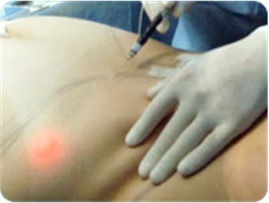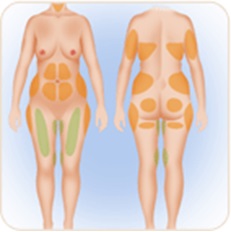Introduction
Liposuction is a popular procedure performed in the world today. The American Society of plastic Surgeon estimated about 205,000 procedures were performed in that country in 2011. Both men and women are now willing to spend their money on liposuction to achieve a desired body shape.
How Is Liposuction Performed
Liposuction has been introduced in the medical fraternity since 1978 but only gained popularity in 1980. The technique used during that time was far from ideal and the procedure was done under general anaesthesia. The size of the suction canulla used was rather large and traumatic to the skin. This resulted in unwanted effects such as bruises, bleeding and irregular skin contour.
Although this procedure is still performed traditionally, recent advancements in technique have made liposuction procedure nowadays less traumatic hence shortening recovery period. Liposuction is now considered as one of the minimally invasive procedures in cosmetic surgery. There are various techniques available in the market now such as “Laser lipolysis”, Vaser lipo”, “radiofrequency” and “water-jet liposuction”. Each technique differs and has its own advantages. In general the current technique is less traumatic as the size of the suction canulla is smaller. The suction procedure does not have to be vigoruous like the olden days. Scars produced are smaller with rapid recovery period. This procedure can also be done under local anaesthesia and this will reduce the risks involved with general anaesthesia.
Complication
Liposuction is like any other cosmetic procedure with possible risks and complications. This can be short term or permanent and may sometimes be fatal.
- Infection. Infection is a risk in any surgical procedure and can happen after liposuction. The surgeon usually prescribes antibiotic to the patient but this does not guarantee that infection will not set in. Make sure that the wound is clean to prevent infection into the deeper tissue. Serious infection such as necrotising fasciitis is very difficult to treat and may cause death.
- Embolism. Embolism occurs when pieces of fat globules enter the blood stream during the liposuction procedure. These fat globules maybe dislodged into the lungs, brain or the blood vessels. The patient will experience breathlessness and difficulty in breathing. In severe cases it may cause a stroke or sudden death.
- Injury to internal organ. During liposuction the surgeon is not able to see the end of the canulla.This may risk perforating the internal organs such as the bowel, liver , lungs or large blood vessel. This complication may occur during liposuction involving the abdominal area. If such complications occur emergency surgery is required to repair the damage to prevent fatal complications.
- Seroma. Serum or a yellowish coloured fluid may accumulate in the areas where liposuction has been performed. Patient has to wear a pressure garment to prevent this complication.
- Injury to the nerve. Patient may experience numbness or hypersensitivity (paraesthesia) over the affected skin. This complication may be temporary or permanent.
- Bruising. Bruising may occur as a result of injury to the blood vessel under the skin and this may be noticeable for weeks or months.
- Skin necrosis. The blood supply to the overlying skin maybe damaged resulting in changes in skin colour and eventually the skin will slough off. This may also incur risk of secondary infection.
- Burn. Liposuction using ultrasound technique may cause burn due to heat production.
- Fluid imbalance. A large amount of fluids is infused into the tissue during liposuction and this fluid may be shifted into the lungs. This fluid imbalance may cause heart or kidney failure.
- Anaesthetic toxicity. Signs and symptoms of toxicity include light headedness, restlessness, drowsiness, ringing in the ear, slurred speech, metallic taste in the tongue, numbness of mouth and tongue, muscle twitching and fits. In severe cases the heart may stop and cause death.
- Death related to liposuction. There has been many reports on death related to liposuction especially those done by unqualified personnel.
- Liposuction is a surgical procedure. Despite recent advances in technique like minimally invasive procedure, complications may still arise. Reports show that 3 deaths may occur in every 100,000 liposuction procedures performed. Other reports show a higher death rate of 20 to 100 in every 100,000 liposuction performed. The risk is even higher if liposuction is performed with any other surgical procedure at the same sitting.
Who Is Suitable To Undergo Liposuction
Liposuction is not for everyone and this is not the procedure for losing weight. Each patient has to be assessed by the surgeon. A person with a body mass index of less than 30 with normal or near nomal body weight is ideal for liposuction. Although age is not a major factor in liposuction the reduced skin laxity in elderly patient may result in poor aesthetic appearance. Patient who suffers from diabetes or poor blood circulation is not suitable for liposuction.
Reference
- Liposuction.www.fda.gov/MedicalDevices../Liposuction
- Liposuction. Cosmetic Surgery and Beauty. Issue 4, 2012. Page 104-106
| Last reviewed | : | 16 January 2015 |
| Writer/Translator | : | Dr. Salina bt. Ibrahim |
| Accreditor | : | Dr. Normala b. Hj Basiron |









